
One of the first office jobs I held was the summer after my freshman year in college. I worked for McDonnell Aircraft Company. as a material accounting cost clerk. MDAC was a defense contractor that made F-4 Phantom Jets and the Gemini space capsule among other things. Today it is part of Boeing.
I was a very lowly cog in a large complex system. My job was to write up the accounting entries to make sure that the inventory systems were in sync with the actual inventory. Some auditor would go out on the factory floor and count how many left-handed wing tips were sitting somewhere along the assembly line. My entire job was to compare the auditors count of actual inventory with the number recorded in the accounting system and then write out the journal entry to adjust the number in the accounting system to match the number that the auditor had found on the factory floor.
It was as mind numbing as you might imagine. I wrote the entries by hand onto paper forms that had to be reviewed and approved by my supervisor and then sent off elsewhere to be punched onto punch cards and fed into the computer located three buildings away.
There is one entry that sticks in my head. The auditors reported that they had counted three Pratt and Whitney jet engines on the floor. The accounting system thought there were four. How do you lose a 16-foot jet engine? Not my problem and no one else seemed terribly concerned. I wrote up the journal entry and it happily flowed off into the system.
You don’t design and build fighter jets with a handful of smart people. You need a complex system of people and processes and technology working together to pull it off. People, process, and technology is one of those cliches that gets thrown around a lot in organizations. I didn’t know the cliche at the time, but I was living in the middle of its reality.
This was when I began to grasp the complexity baked into large organizations. There are two choices for how to play in this environment. One is to be content with occupying a particular niche in the greater whole. The other is to wonder how it all fits together. Clearly, I opted for door number two.
I chose the word “play†intentionally. There is another lesson that I found in my time as a clerk. You have to accept that systems don’t always match reality. You have to build in mechanisms for correcting when systems and reality fall out of sync. And those mechanisms have their own weaknesses. Complexity and perfection are not reconcilable. Order is always battling chaos.
When I was learning physics, we learned about the second law of thermodynamics and the notion of entropy. There was some nasty math involved but our teacher summed things up this way:
Life is a game. You can’t win. You’re going to lose. You can’t get out of the game.
That leaves you with the option of playing simply for the sake of playing. A good lesson for all seasons.
 During my senior year in high school, several of my classmates and I decided that we wanted to put on a play. That wasn’t something baked into the flow of the year at that point. Some years, there was a production; some years, not. We made the case to the powers that be and got permission to proceed.
During my senior year in high school, several of my classmates and I decided that we wanted to put on a play. That wasn’t something baked into the flow of the year at that point. Some years, there was a production; some years, not. We made the case to the powers that be and got permission to proceed.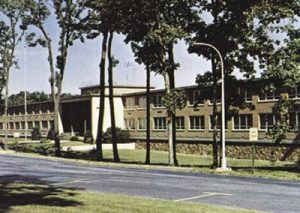 My first experience with ritual was as an altar boy when being a boy was a prerequisite and you had to memorize the responses in Latin. Others may have thought about the ritual aspects; I was mostly concerned with not tripping on my alb.
My first experience with ritual was as an altar boy when being a boy was a prerequisite and you had to memorize the responses in Latin. Others may have thought about the ritual aspects; I was mostly concerned with not tripping on my alb. It took me a long time to realize that I wasn’t being heard because I wasn’t taking the stage. I confused doing well in classrooms with having something to say worth hearing. It didn’t occur to me that getting called on was a teacher’s decision, not mine.
It took me a long time to realize that I wasn’t being heard because I wasn’t taking the stage. I confused doing well in classrooms with having something to say worth hearing. It didn’t occur to me that getting called on was a teacher’s decision, not mine.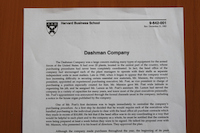 I’m a fan of case studies–both as a teaching tool and a research tool. They’re often disparaged. And caricatured. I certainly had my own reservations when I first encountered them. Why couldn’t somebody just lay out the problem and get on with solving it? What was the point of all the arguments and background and history and politics?
I’m a fan of case studies–both as a teaching tool and a research tool. They’re often disparaged. And caricatured. I certainly had my own reservations when I first encountered them. Why couldn’t somebody just lay out the problem and get on with solving it? What was the point of all the arguments and background and history and politics? I used a picture of a woodpecker last week and I promised the story that went with it.
I used a picture of a woodpecker last week and I promised the story that went with it.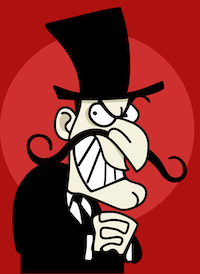 If my mother were still around, I’m sure she would be a Bernie Sanders supporter. At heart, she was a communist. Dad was your classic engineer. Both were from blue collar roots. In that environment, business in general and big business in particular was the enemy.
If my mother were still around, I’m sure she would be a Bernie Sanders supporter. At heart, she was a communist. Dad was your classic engineer. Both were from blue collar roots. In that environment, business in general and big business in particular was the enemy.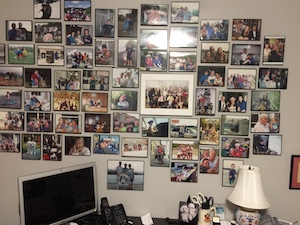
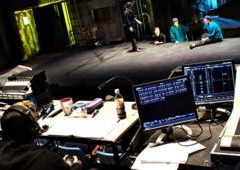 I’ve talked about the
I’ve talked about the